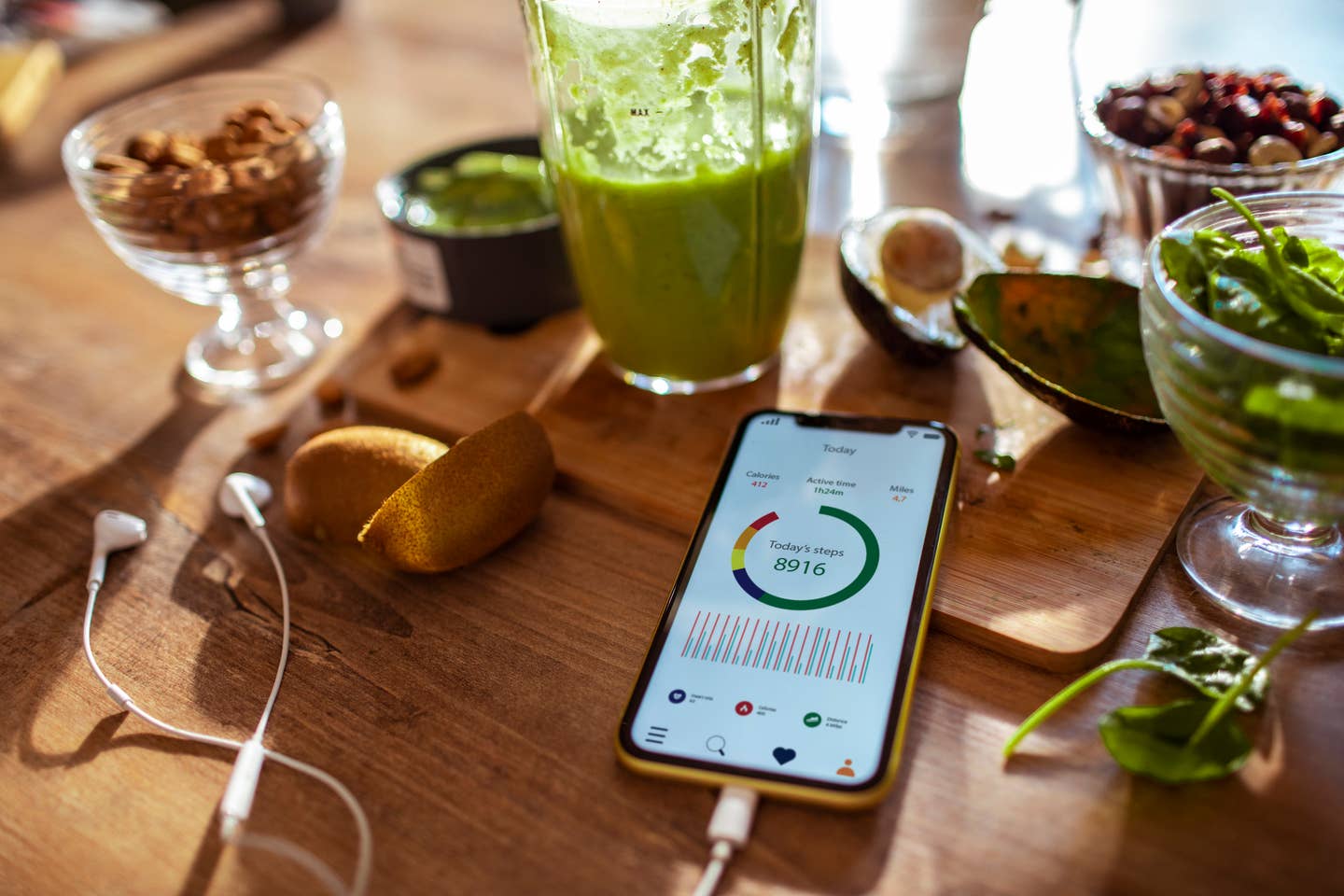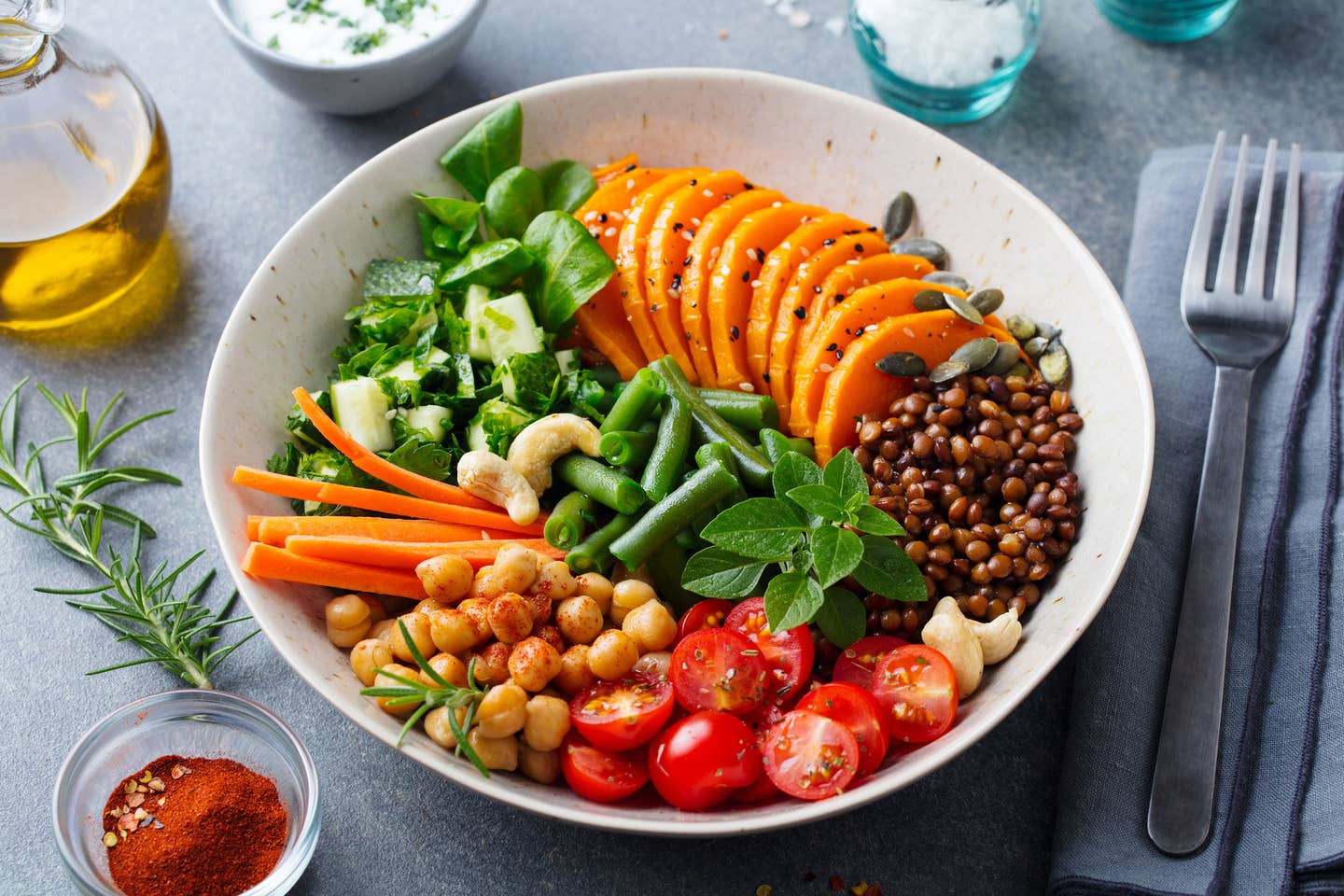
How Many Calories Should I Eat In a Day to Lose Weight? An RD Explains
What I Eat in a Day videos have become a major trend on TikTok, garnering 7 billion views to the hashtag #WhatIEatInADay. But the videos, as light as they appear, have a dark side, triggering disordered behavior and poor eating habits as people aspire to cut calories to follow the example of these random TikTokers who have no idea what they should be eating in a day.
Restricted dieting is not a sound strategy for either weight loss or to stay healthy, long-term, so if your goal is to inhabit a healthy body, have energy, and maintain a healthy weight, the best way to do that is to fuel yourself with nutrient-rich foods comprised of mostly plant-based ingredients: Vegetables, fruits, whole grains, legumes, nuts and seeds, and not to count calories.
"What I Eat in a Day" might as well be called: What I Don't Eat In a Day. Most of the posts show people consuming less than 1,000 calories in the course of their meals. The restrictive how-to videos tally up totals for each meal and snack and are neither healthy nor helpful, since the actual number of calories you or your friend or sibling or parent may require day-today is variable, depending on your age, size, metabolism, activity level, and health goals. As to the question of how many calories your body needs in a day, quality matters, as well, since an avocado is healthier for you, even though a medium avocado has 234 calories than a candy bar or bag of chips that may have fewer.
When it comes to counting calories, most people don't know what they're doing
“Everybody’s body requires a different nutritional amount and what you eat should not be based on a completely different person,” explains Dr. Amy Lee, an expert in weight control, obesity, and nutrition and Head of Nutrition of Nucific. “It is dangerous when you don’t know what you are doing. Especially for a younger audience that can be easily influenced, this trend can create dangerous eating habits or disorders that can create a bad relationship with food at such a young age.”
Despite the fact that counting nutrients is a better strategy than counting calories, we know that people will want guidance. With that in mind, here is exactly how many calories you should be eating a day, and the dangers of what can happen if you restrict too much.
How to Calculate Your Daily Calorie Needs
Our body needs a certain amount of calories just to just exist, sit in a chair, breathe and function, which is called our basal metabolic rate (BMR) or sometimes referred to as our resting metabolic rate (RMR). This usually winds up being around 60 percent to 70 percent of the total calories we burn in a day, before we go for a walk or a run. There’s a simple equation that can be followed to estimate your BMR called the Harris-Benedict equation.
For women, the equation is: 655 + (4.3 x weight in pounds) + (4.7 x height in inches) - (4.7 x age in years) = BMR
So if you are a 130-pound woman who is 5 foot 2 inches tall and 24 years old your resting metabolic rate (what you need to breathe and function without adding in your gym session) is 1,392, so you can eat about 40 percent more than your dad, whose example is below.
For men, the equation is: 66 + (6.3 x body weight in pounds) + (12.9 x height in inches) - (6.8 x age in years) = BMR
That means is if you are a 170-pound man, who is 5 feet 10 inches tall and 68 years old you would need 804 calories just to keep your body in a resting state before you walk the dog.
(For anyone looking to plug in their weight and height into a calculator, and spare the third-grade math lesson, try using this one from Very Well Fit.)
From there, you multiply your BMR by an activity factor. This way you find out what you need to eat to fuel your full day of activities, from housework to training for a 10K. These include:
- Multiply BMR by 1.2 if you are sedentary (little to no exercise)
- Multiply BMR by 1.375 if you are lightly active (1 to 3 days per week of light exercise or sports)
- Multiply BMR by 1.55 if you are moderately active (3 to 5 days per week of moderate exercise or sports)
- Multiply BMR by 1.725 if you are very active (6 to 7 days per week of hard exercise or sports)
- Multiply BMR by 1.9 if you are extra active (6 to 7 days per week of very hard exercise or sports and a physical job or 2 days of training)
Keeping going with our 24-year-old and her dad examples from above, the very active woman needs 2,401 calories to simply fuel her lifestyle, and her dad would need 1,246 calories to keep up his moderately active lifestyle of golfing and walking or biking three days a week.
It’s normal for men to have a higher BMR compared to women, depending on body composition and activity levels. The Harris-Benedict equation tends to be pretty accurate, but it could underestimate calorie needs for individuals who have a higher muscle mass.
Let’s do another example of a 5’6” female who weighs 165 pounds and is 26 years old. The formula would look like this:
- BMR = 655 + (709.5) + (310.2) - (122.2) = 1552.5
If she is more sedentary, you would multiply 1552.5 by 1.2. This would bring their BMR to 1,863. Therefore, this individual would need to consume 1,863 calories per day to maintain their weight.
So How Many Calories Should I Eat to Lose Weight?
Once you determine your calorie needs at rest and with your activity level, you can make adjustments from there to start losing weight on a healthy timeline. Science tells us that for sustainable weight loss that you can maintain, losing 2 pounds a week is a good goal, and more than that will prompt your body to lower its metabolism and result in needing fewer calories at rest, so when you go back to eating normally you will gain weight. In order to shed 1 pound of fat you need to burn off 3,500 calories which means if you eliminate 250 to 500 calories daily, you can lose between half a pound and 1 pound of fat each week.
Although you may be thinking that you could restrict even more calories to have the weight come off faster, but this strategy usually will wind up backfiring. Losing between half a pound and 2 pounds per week is a healthy range since you can dramatically look and feel different in just one month (losing some 8 to 10 pounds of fat) and keep going toward your goal if you need to lose more to be your healthiest. It’s important to remember that your rate of weight loss may not be consistent week after week, since our body weight will fluctuate depending on factors such as stress, inflammation, hormones, and other health situations unrelated to calorie intake.
Extreme Calorie Restriction Isn’t Ideal
Any diet that recommends eating fewer than 1,200, can wind up being more harmful than beneficial since cutting back dramatically will cause your metabolism to slow down, often referred to as metabolic damage. According to the Academy of Nutrition and Dietetics, a significant calorie deficit will make your body go into "survival mode" and adjust its burn rate down, in order to maintain the minimal functioning level possible on fewer calories. Over time, your body learns to utilize fewer calories to perform the same tasks and when you go back to eating normally it will store anything above that lower threshold as fat.
Another study was done on a range of young and middle-aged adults, of normal-weight, or moderately overweight BMI, found that those who reduced their daily calories by 12 percent (which would be cutting out about 200 calories if you follow a 1,800 calorie diet) were able to maintain a 10 percent loss in body weight over two years. Not only that, but their risk factors for age-related diseases such as diabetes, heart disease, and stroke had decreased along with inflammatory markers and thyroid hormones.
Bottom line: You probably need more calories than you think to solely function properly and maintain a healthy weight. Severely restricting calories can wind up slowing your metabolism and preventing weight loss. To lose weight, first calculate your metabolic rate, factor in your activity level and then eliminate between 250 and 500 calories a day for a healthy rate of weight loss that is sustainable over time.
More From The Beet






